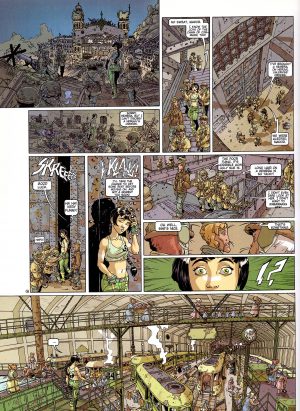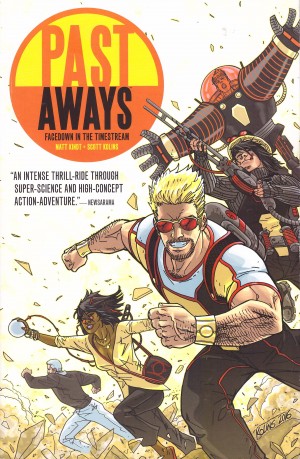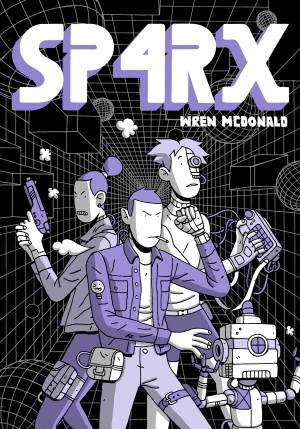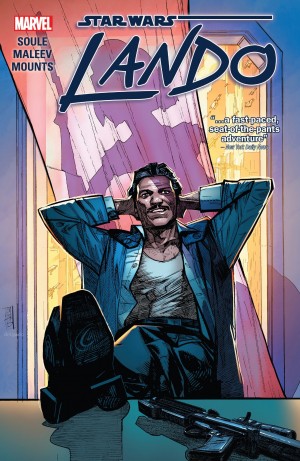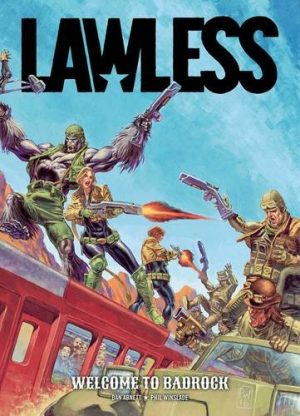Review by Ian Keogh
Spoilers in review
NBM again combine their final two translations into a single volume, except now presented at only slightly wider than standard American graphic novel format, this needed to maintain the ratio of the shrunken pages due to differences in European production sizes. It’s disappointing because there’s considerable beauty in the detail of Philippe Buchet’s art, and shrinking it to this size renders much of it meaningless as per the first panel of the featured page.
As has been the case throughout the series, Jean David Morvan varies the style of his adventures yet again. Artifice sees Navee land on a planet engulfed in a worldwide war between humanoids half her size and a robot society that’s developed numerous forms. And Maximum (In)Security is a claustrophobic tale of a jailbreak on a prison ship.
In Artifice while Navee finds herself rescued by the nearest equivalent to humans, their society is one rooted in the structures of World War I, and much of the battle technology also dates from that era to supply a deliberately retro look. It’s contrasted with the sterility of the robots, revealed to be under the control of a single guiding intelligence that’s deliberately perpetuated war for entertainment. Morvan makes good use of Navee’s genetic inability to be telepathically read in a tale possibly meant as a political metaphor, but which somehow lacks the tension of earlier Wake stories. These, however, set a very high standard, so it’s not as if we’re being fobbed off with poor material.
There’s a plot of organisational corruption running deep in Wake, to which Morvan occasionally returns, and Maximum (In)Security is one of those stories. One of Navee’s friends is imprisoned for crimes committed under duress, and a power outage just before she visits appears timed to ensure her friend can be killed before making any disclosures to her. There has also been a failed attempt to sabotage her ship. Navee doesn’t think twice before working her way into prison no under the control of the prisoners, and there’s a clever tension to her subsequent progress. Despite the series not being titled after her, it would be a bold choice to dispose of the character who’s been the main focus to date. As has already been proved, however, others can be surplus to requirement for the future. Morvan also drops in some fascinating extra elements to be played out at a later date.
With every passing volume of Wake Buchet’s art becomes more impressive. The great variance in landscapes and technology required for Artifice makes for an effective contrast, and a thrilling element of Maximum (In)Security is the ingenious methods devised for forms of combat between aliens. Morvan may have made the original suggestions, but Buchet brings them to thrilling life.
Whereas some volumes of Wake have minimised the violence, this isn’t one to show the children, and there’s an ambiguity about the ending, a question arising about why someone didn’t resolve a problem sooner. It’s an example of what makes Wake so interesting. Navee’s exempt, but given how much has changed since the series began, the motivations of others aren’t always apparent. Sadly, this is the final presentation of Wake in English to date. Credit NBM for appreciating the quality in the first place, but their only reason for ceasing the translations must have been an inability to at least break even on the series, and that’s a sad comment on what we buy.

